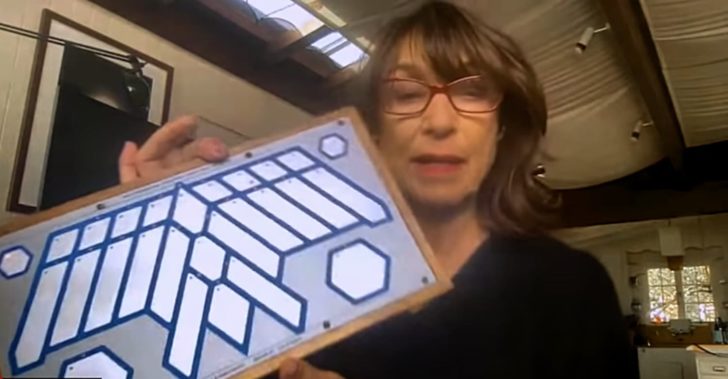In this video, Reverb Associate Editor Fess Grandiose talks with electronic music pioneer Suzanne Ciani.
Ciani has been associated with Buchla for five decades. In the early 1970s, she met Don Buchla and worked for him as a soldering technician, and that’s where she discovered her love for analog synthesis. Within a few years, she became one of the leading synthesists using Buchla systems, for live performance, recording and commercial sound design.
In the interview, Ciani discusses her current Buchla system, some of the pros and cons of 200e modules vs the original 200 series modules, how she uses iPads and Eventide H9s in her performances, the importance of quadraphonic sounds and more.
The interview is especially topical because of Buchla’s recent introduction of 200t modules for Eurorack, and their reissues of the original 200 series designs. Ciani discusses her preference for some of the original ’70s Buchla 200 series designs over the more recent 200e designs.


Step: 1 – have money to burn
About the same cost as a decent piano and much less than the cost of a decent violin.
These price comments seem to come from collectors and hobbyists rather than experienced musicians.
No skilled musician would bat an eye at spending $5K and up on an instrument.
Gigging keyboard players are going to typically have a handful of instruments in that price range, while classical players typically have one instrument that’s even more expensive.
I’ve never met an experience musician that did not want the best instrument that they could buy.
I agree, what I’ve spent just on electronic percussion I could is more than a Moog One 16 voice.
Buying an expensive Buchla setup when a eurorack setup will do the same does not make you an experienced musician or even a good musician
Buchla is expensive for no particularly good reason that I can see – it does mostly the same stuff as most eurorack modules
and there are companies out there designing new modules (and clones) in the Buchla format and then charging the Buchla premium because… well it looks like Buchla
Mutable Instruments Rings: €298
1979 Buchla Rings Clone: €900
This guy didn’t even have to design the module – it was all ready open source
I mostly agree. There are some very good musicians using Buchla, but there will also be people who just enjoy it and collect it. Expensive pianos aren’t just owned by excellent musicians either.
For the Rings clone, I think it’s probably expensive because of economies of scale. He’s made a small batch of pcbs, faceplates, presumably hand-soldering.
If someone enjoys that kind of thing and likes buying or selling it, I’ve not got a problem with that.
Looked this up because I was skeptical.
The Buchla rings from 1979 is $650 USD which is €587 with today’s exchange rates.
Rings is $359 USD which is €325 EUR.
Don’t spread false information.
eoin, if you really were a musicien, you’d know the difference between a list of features and an instrument. An instrument has a set of features, but also acoustic properties and ergonomy. So let musicians choose their instruments. Suzanne Ciani has talent and carreer, so instead of mixing apple with oranges, listen to her wih a bitt of humility.
The music keeps her healthy. A lesson for us all.